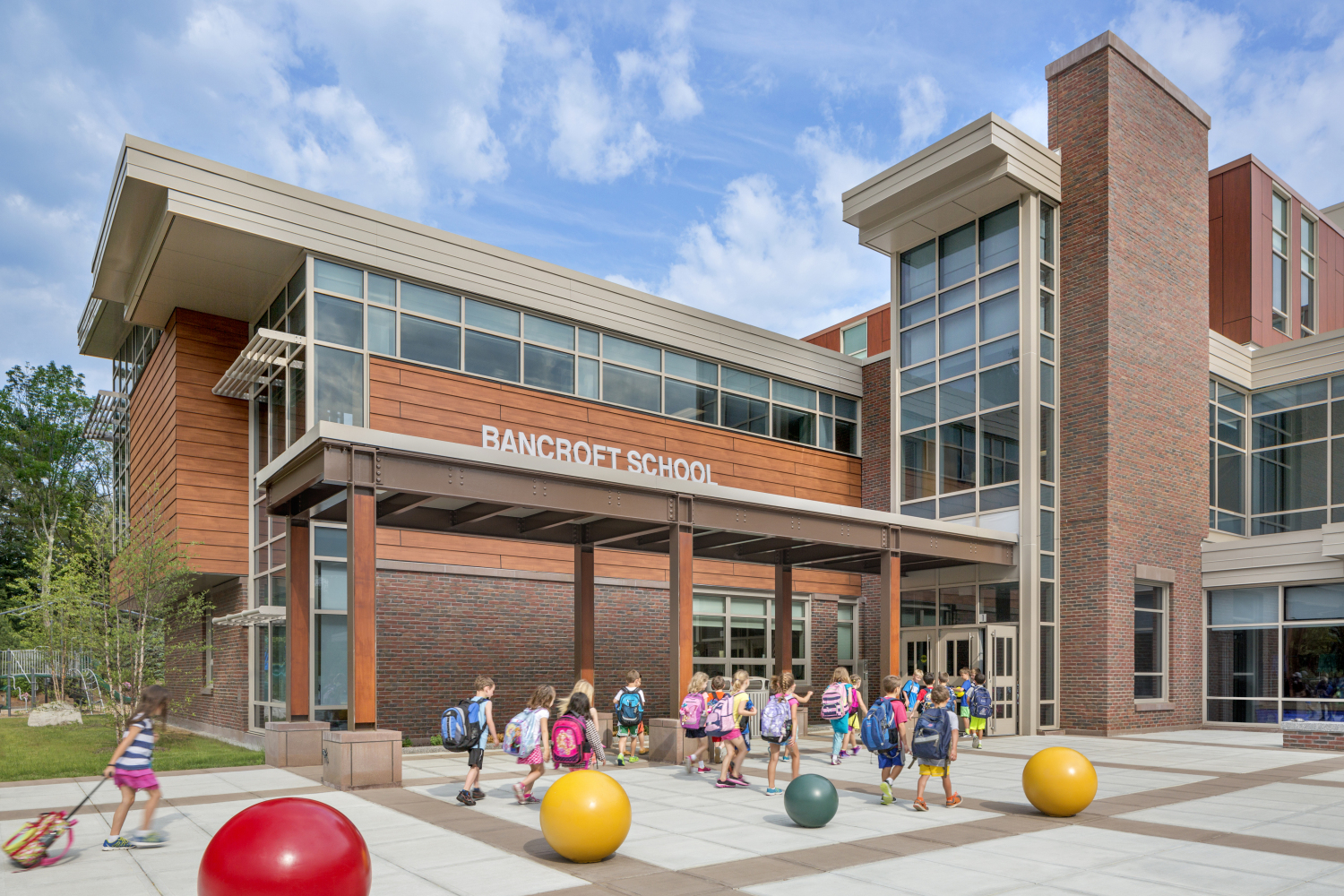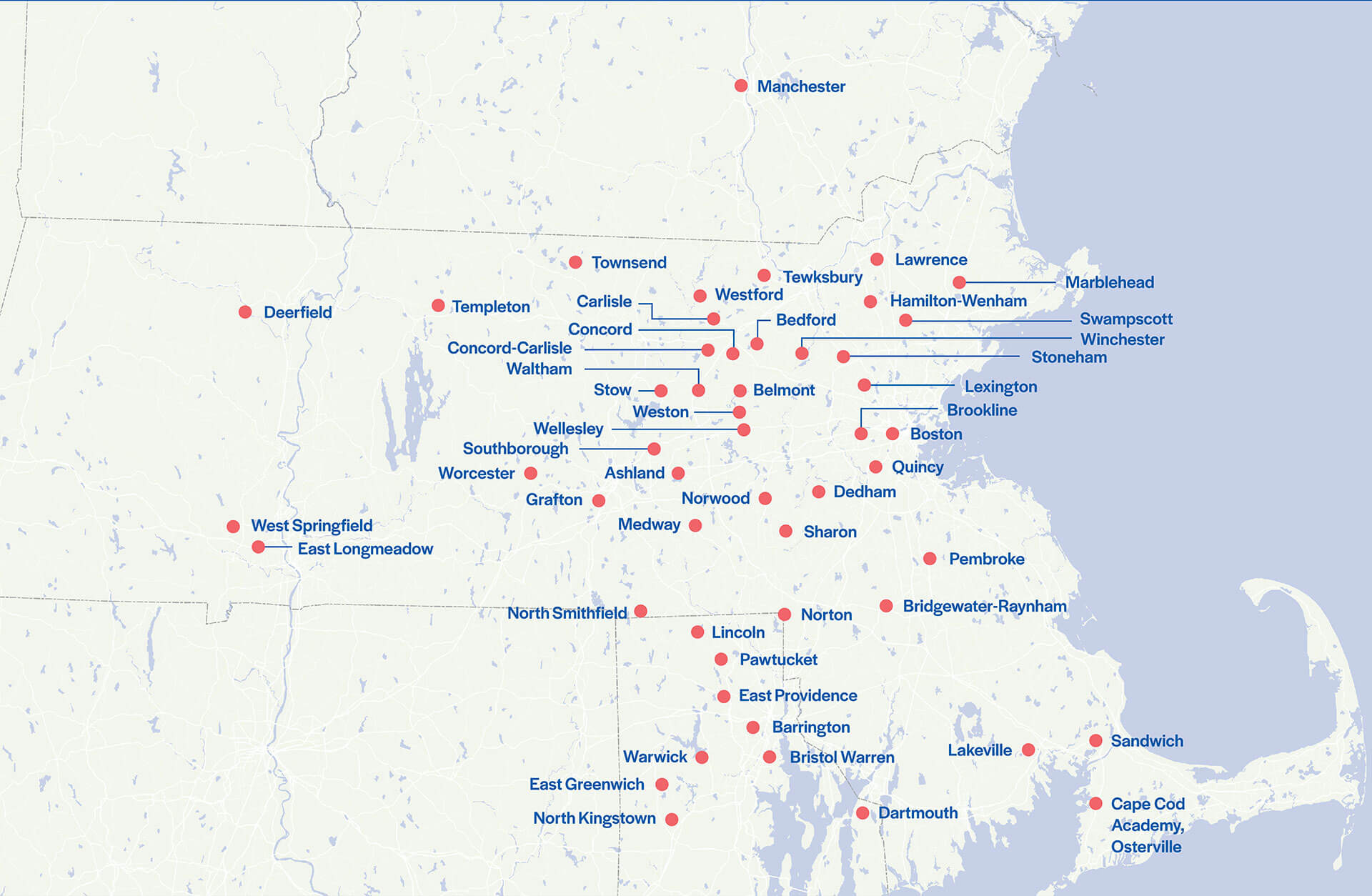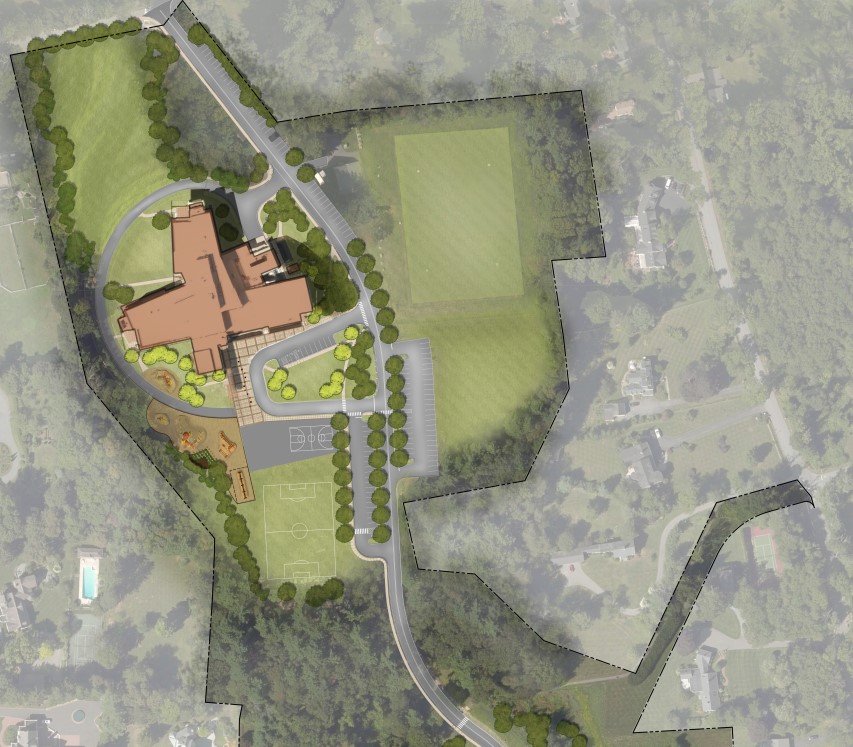
The school’s star-shaped plan maximizes space while preserving adjacent wetlands.
Five wings extend from a central double-height atrium. The school’s narrow building ends and lower roofs reach out into rural surroundings.
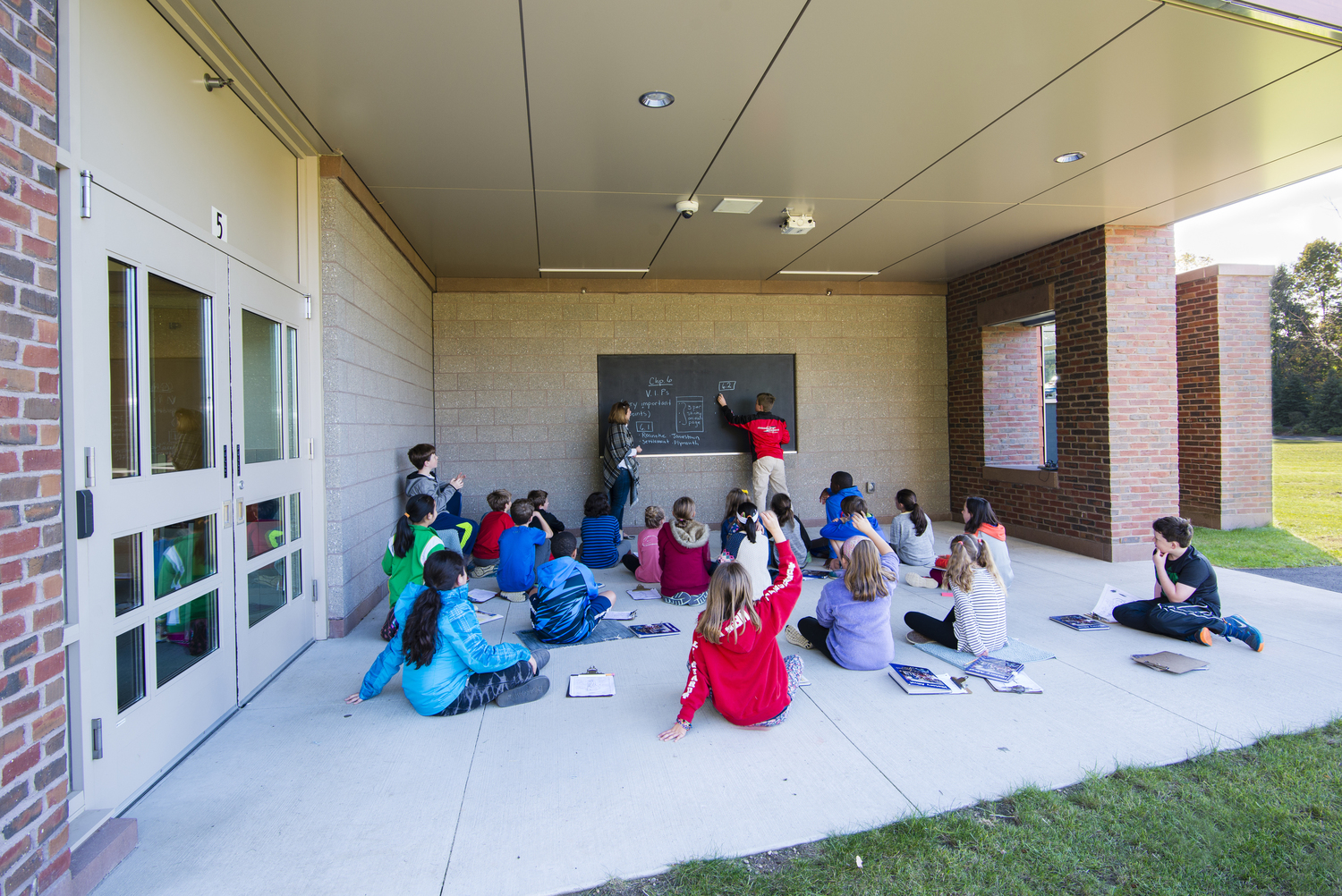
Carved covered “porches” serve as outdoor classrooms, while carefully chosen materials chime with the neighborhood’s rural spirit.
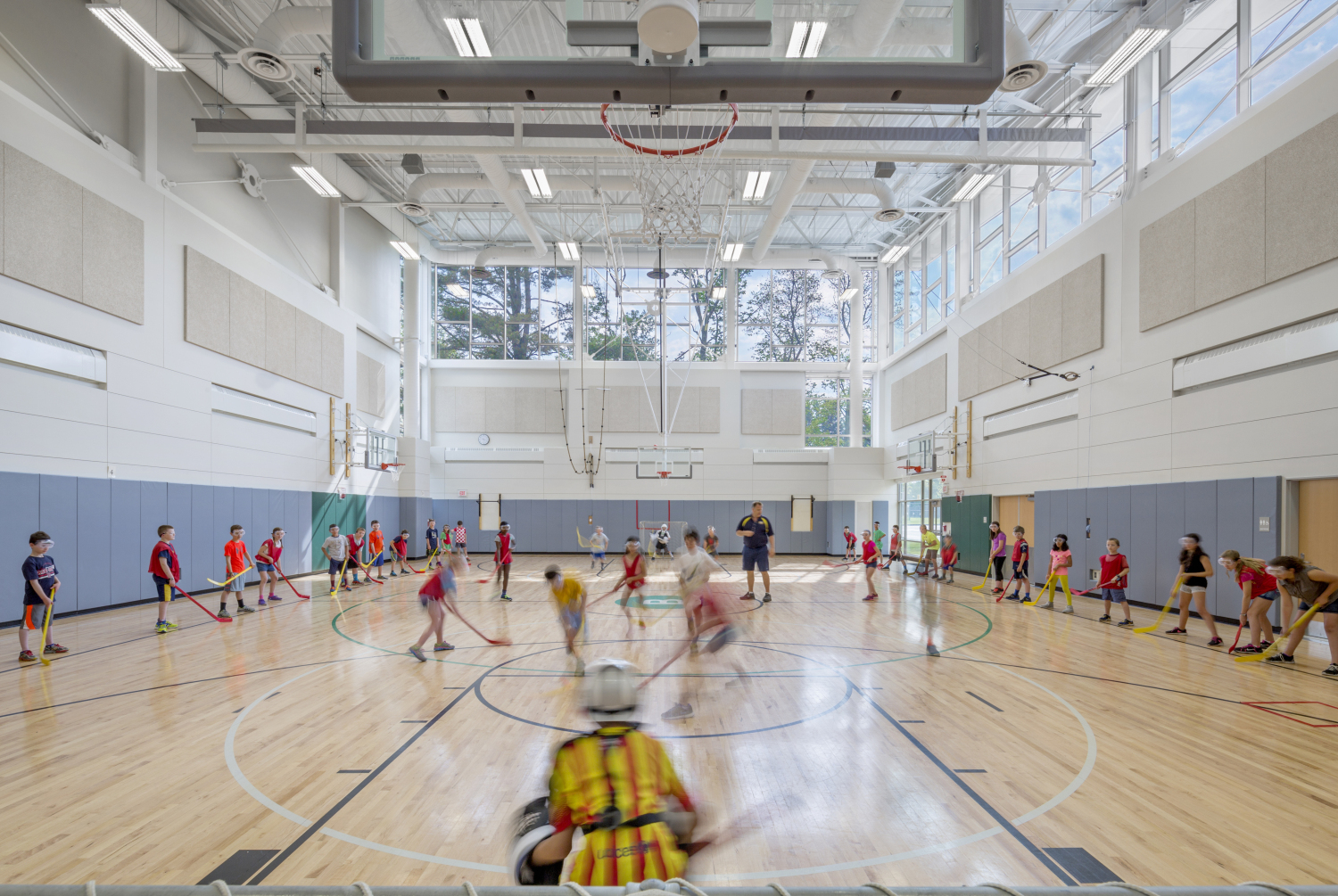
The cafeteria/dining commons and gymnasium are connected by a large, operable wall and are often open for community and student activities after school hours.
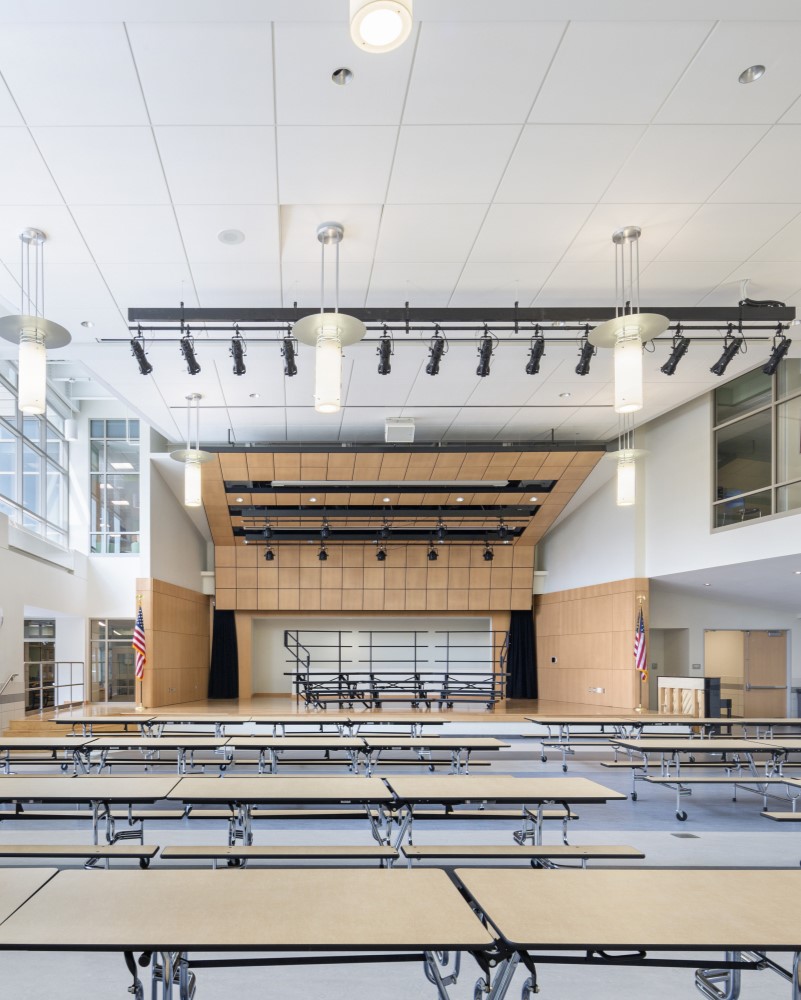
The cafeteria and dining commons is activated by daylight and features built-in seating. Overlooking spaces allow for interconnected floors and educational programs.
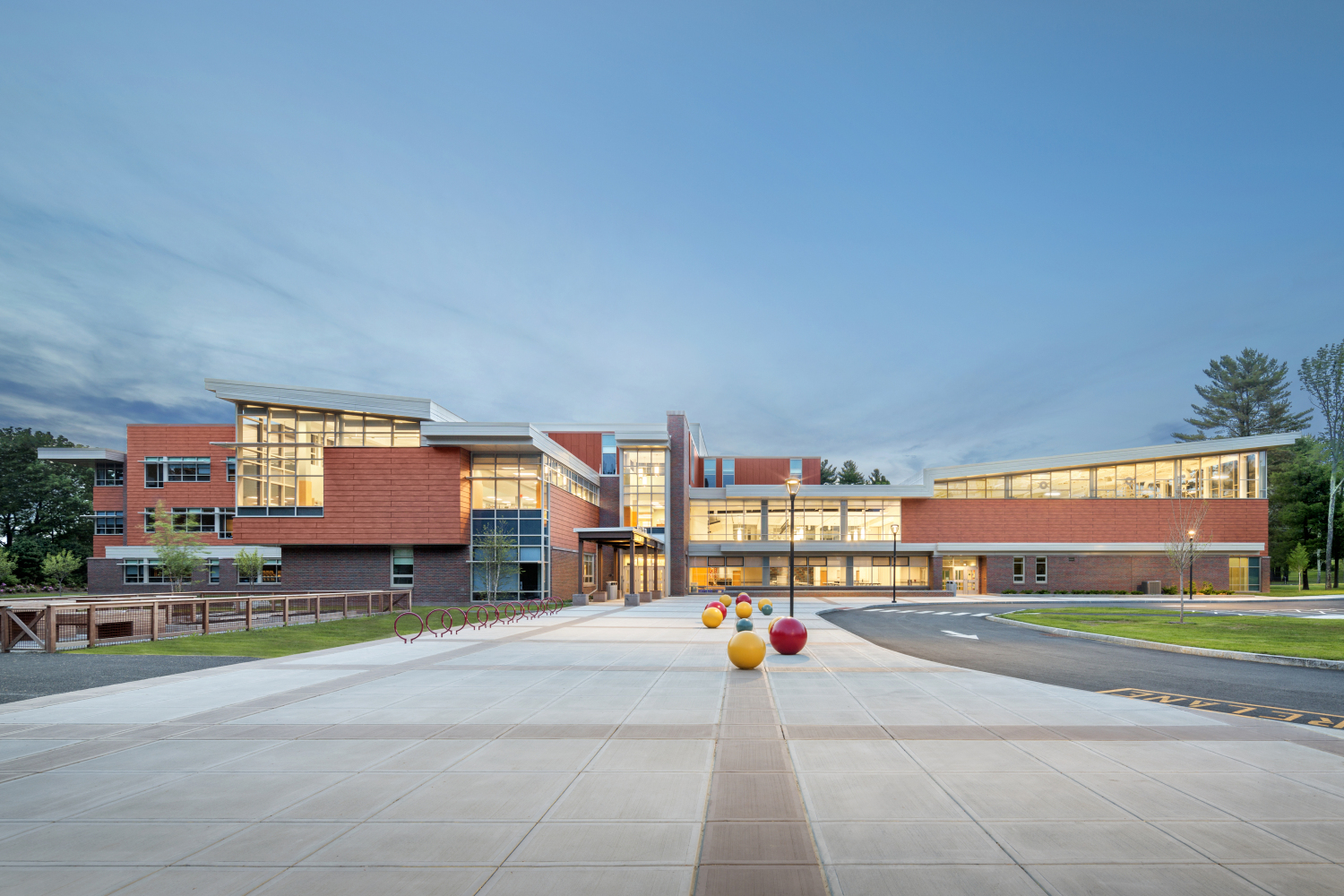
The design flips the main entrance to face south, supporting an improved microclimate, a more secure entrance, and better play areas. Furthermore, the main entrance now faces the sun, filling the atrium with natural light that effuses into classrooms and common areas.
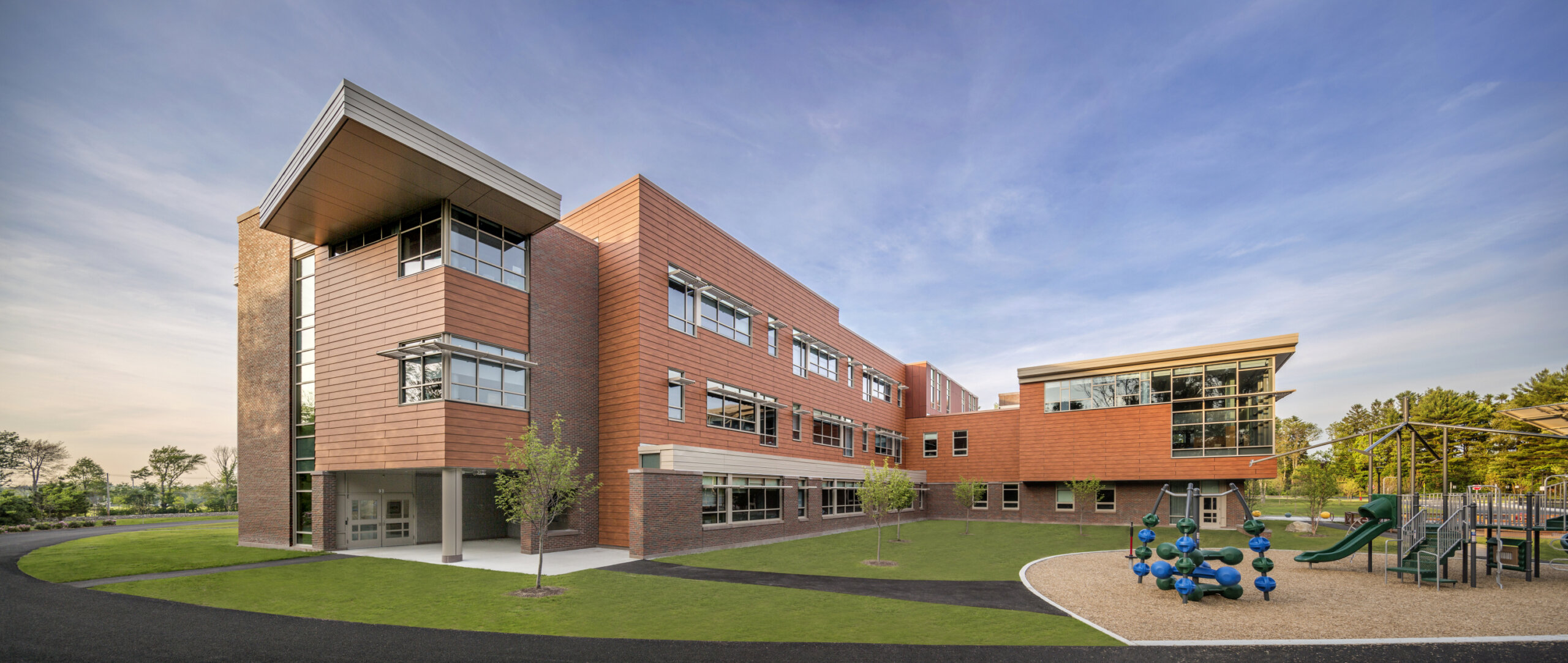
The design reconnects walkways through the wooded areas and into surrounding neighborhoods, allowing easy and safe access to for all students.
The project team held discussions with school and town leaders, as well as Bancroft neighbors, in a series of sustainable design charrettes and educational programming forums. From these sessions came three sustainability goals: protecting the natural assets of the site, enhancing walkability and bikability for all students, and including energy-efficient and sustainable features across the project.
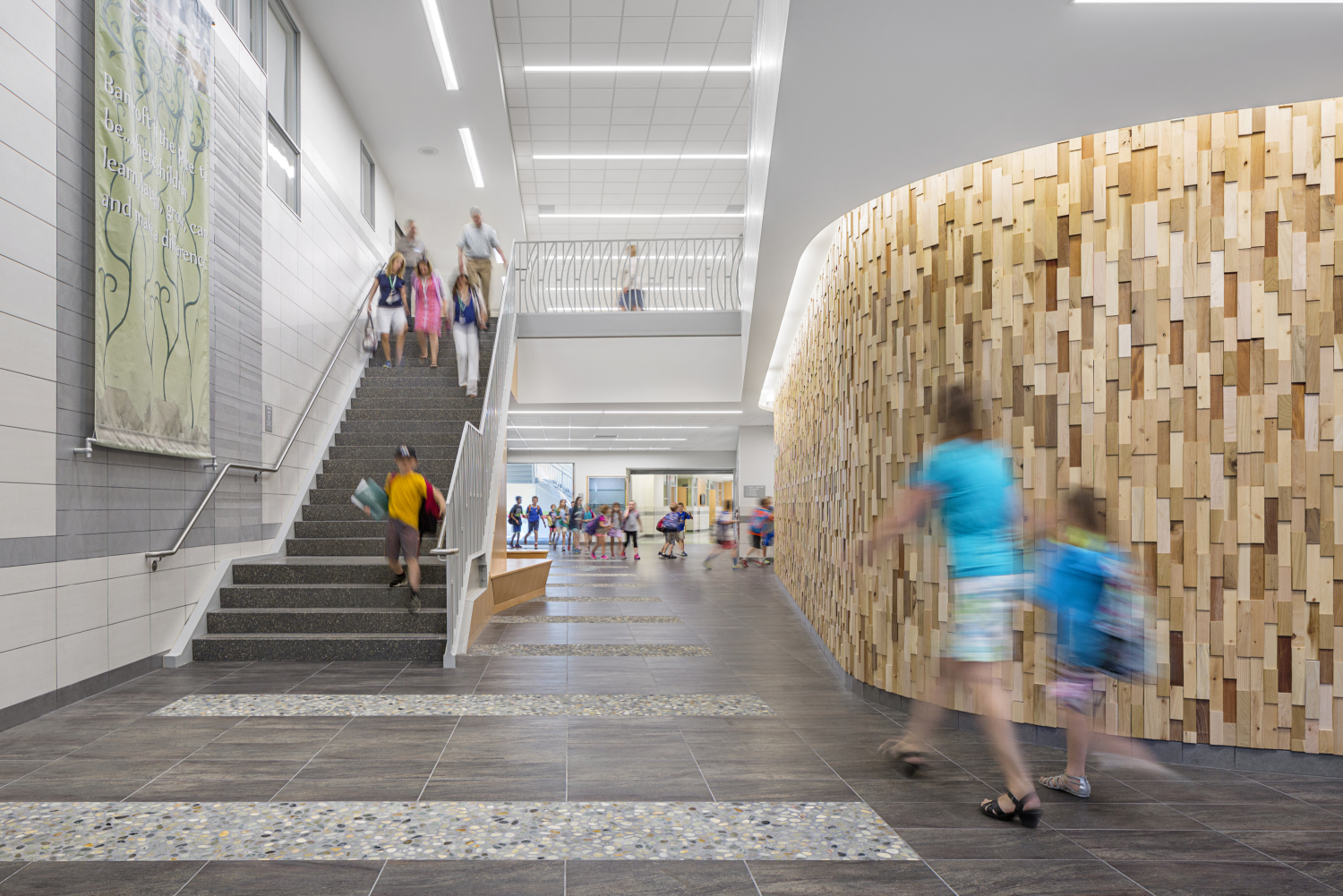
The school’s rural setting inspired the use of reclaimed wood on the lobby’s organically shaped wall and river stone on the floor. The main stair’s guardrail design incorporates visual elements of native grasses and reeds.
40%
Energy performance beyond code
40,000
gallon
Rainwater harvesting system
1,500,000
gallon
Annual potable water savings
98%
Recycled construction waste
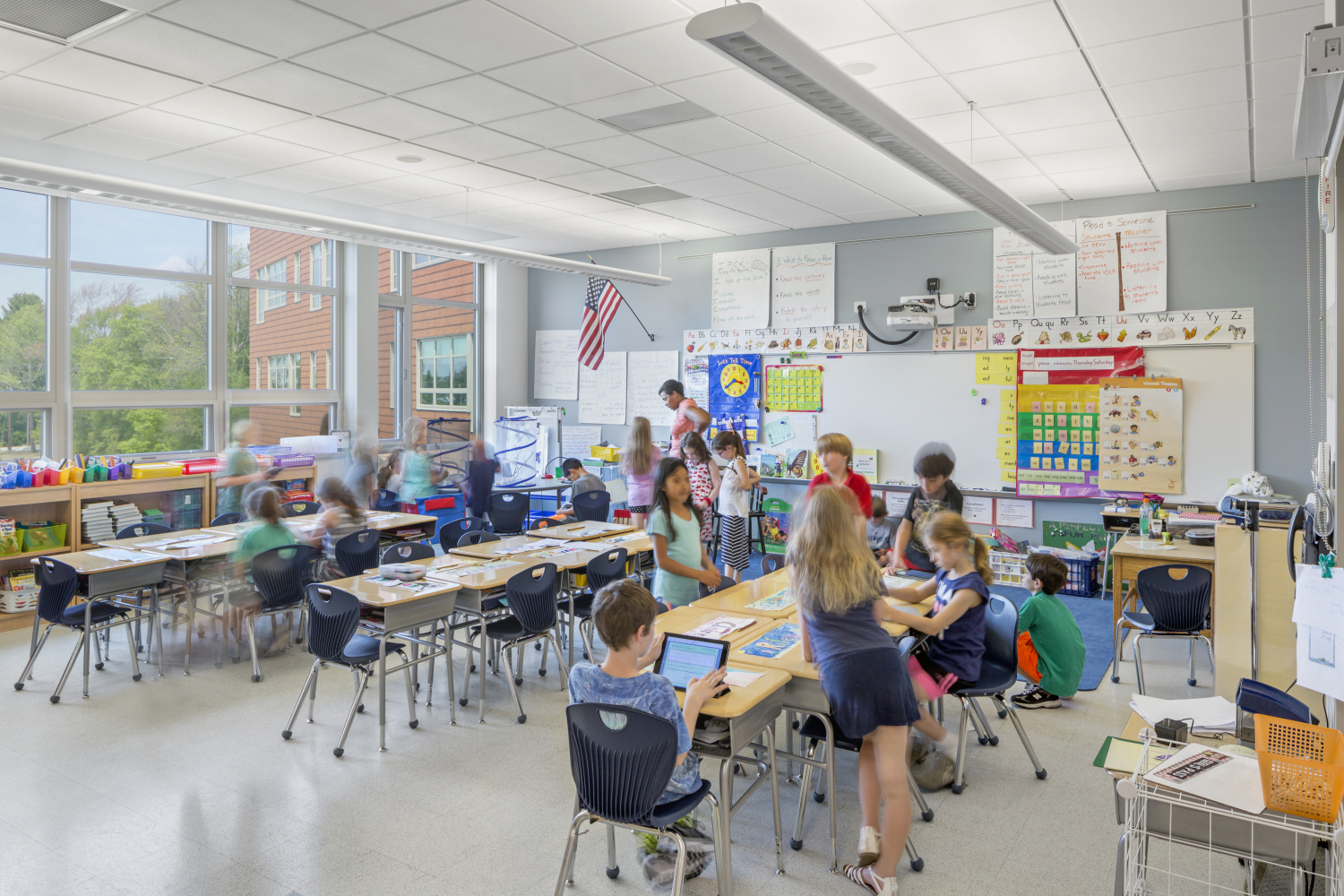
The new hallways are reimagined as a series of classroom commons.
This layout lends a sense of cohesiveness, identity, and safety to each grade. The classroom commons and push-in/pull-out specialist spaces can be used by all students for personalized learning.
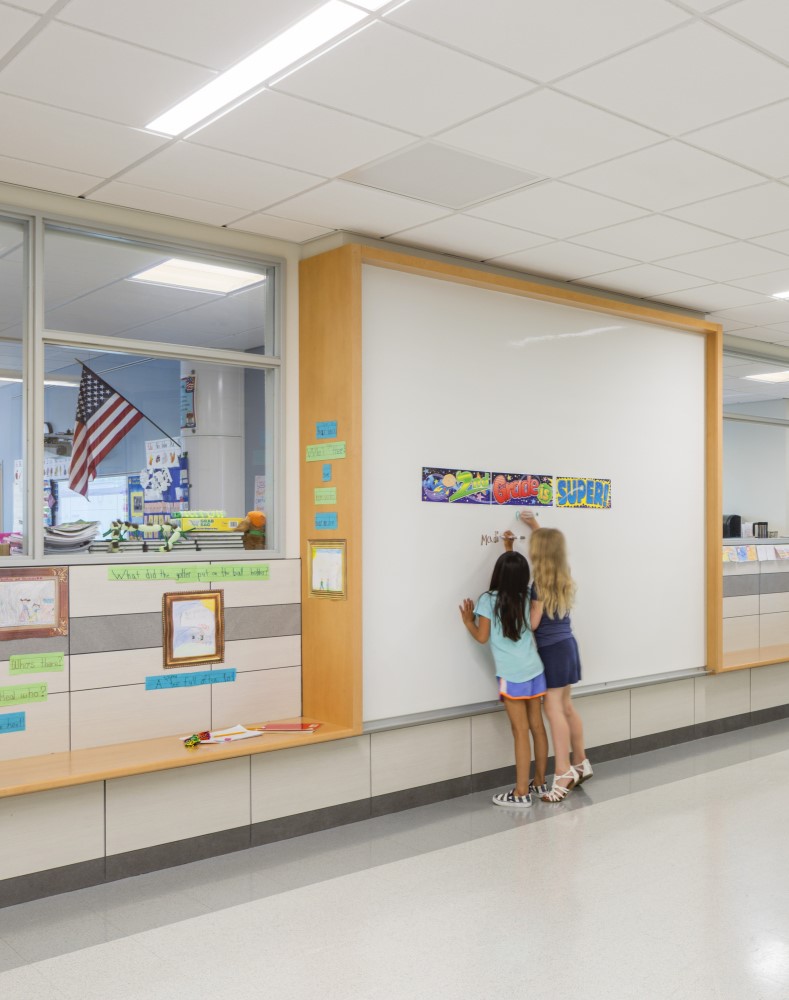
Daylit, exuberant, and active learning environments support student-centered learning on each floor.
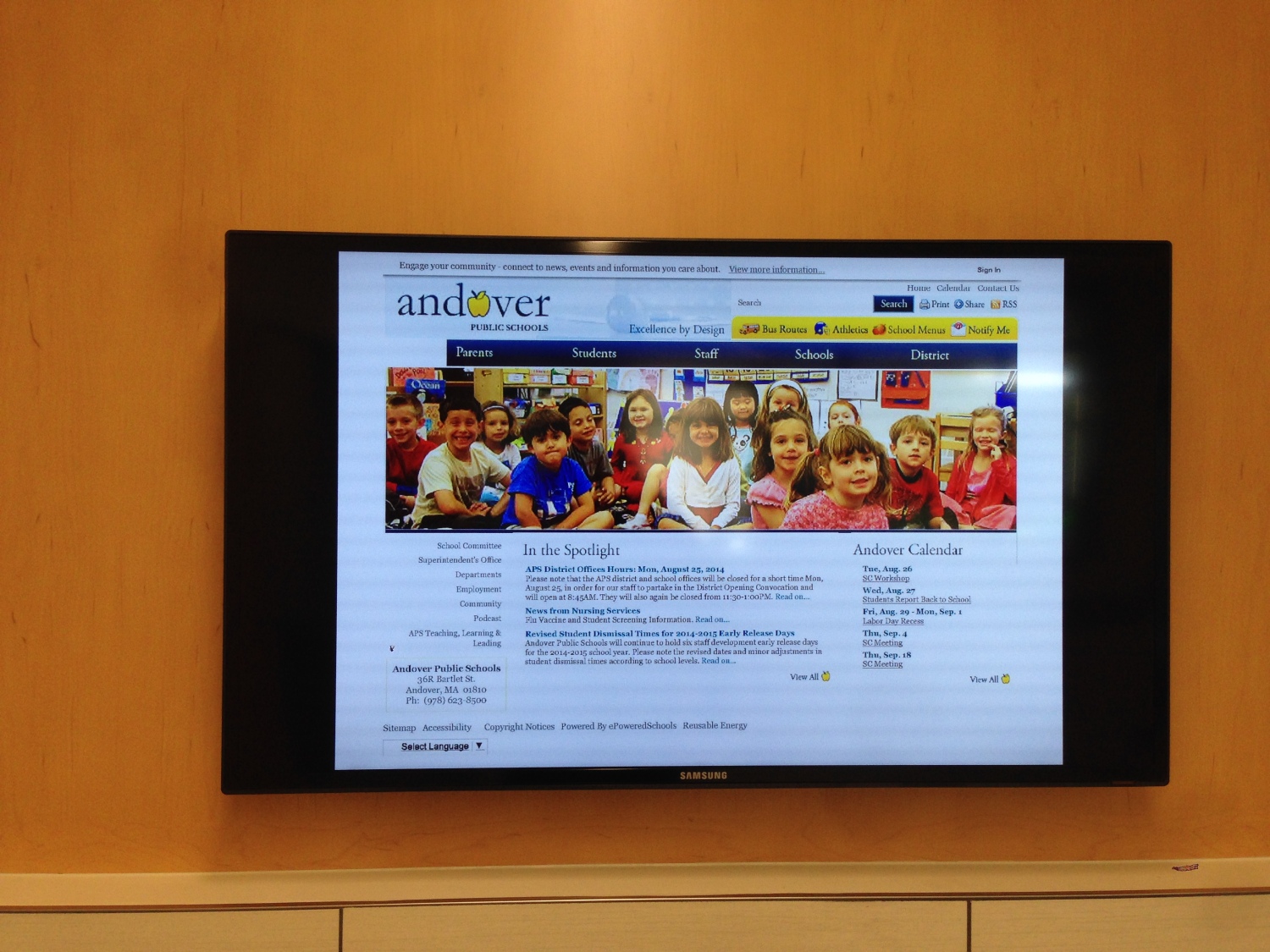
The school’s data acquisition display system is connected throughout its corridors and classrooms.
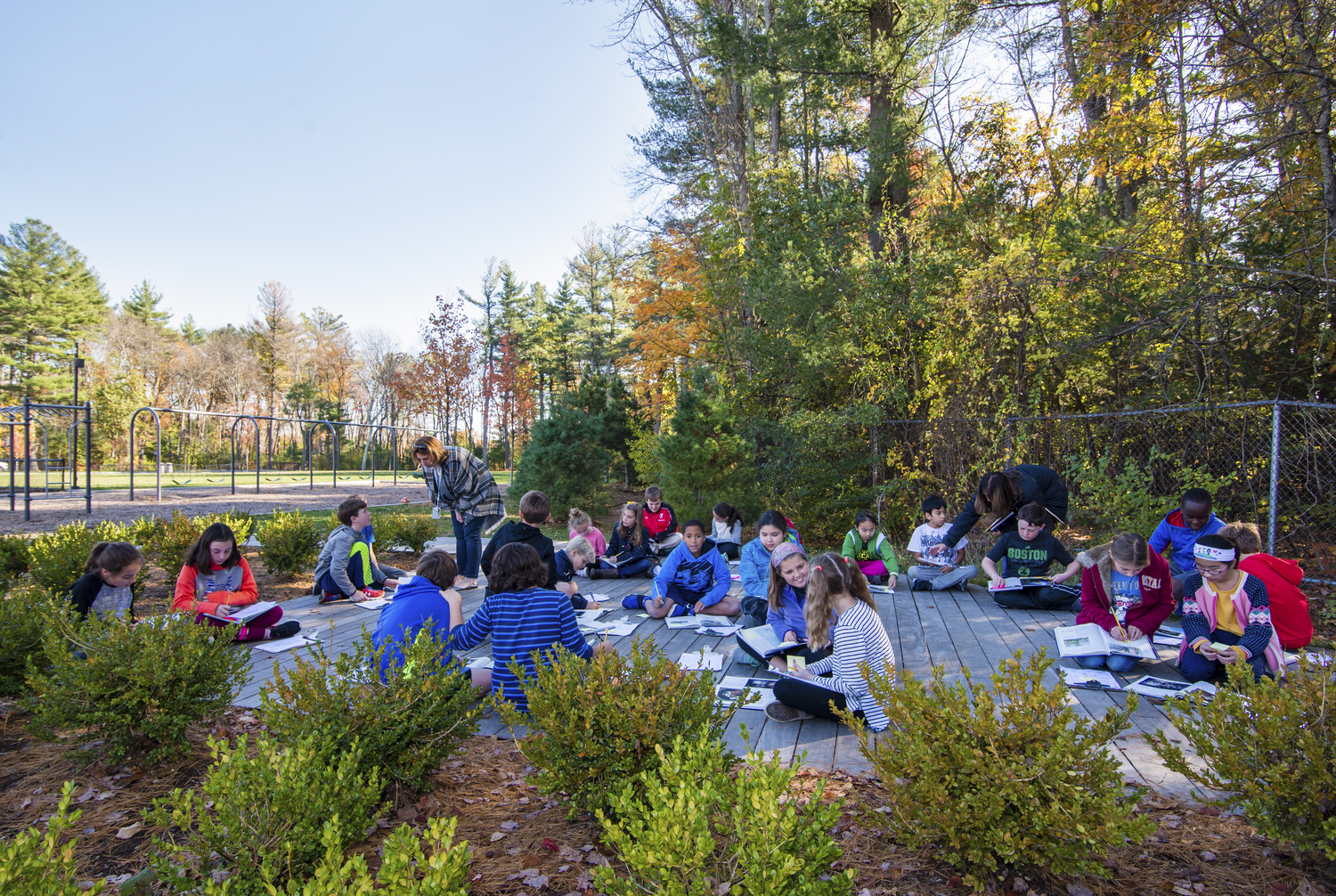
The site design blends learning with play at every turn.
Students can discover numerous fields and courts, a hidden deck nestled in the woods, and bronze animal and insect castings. Native trees, shrubs, and meadows supplement the existing vegetation. These wildlife corridors, with their birds and pollinators, add to the outdoor classroom experience of observation and science projects.
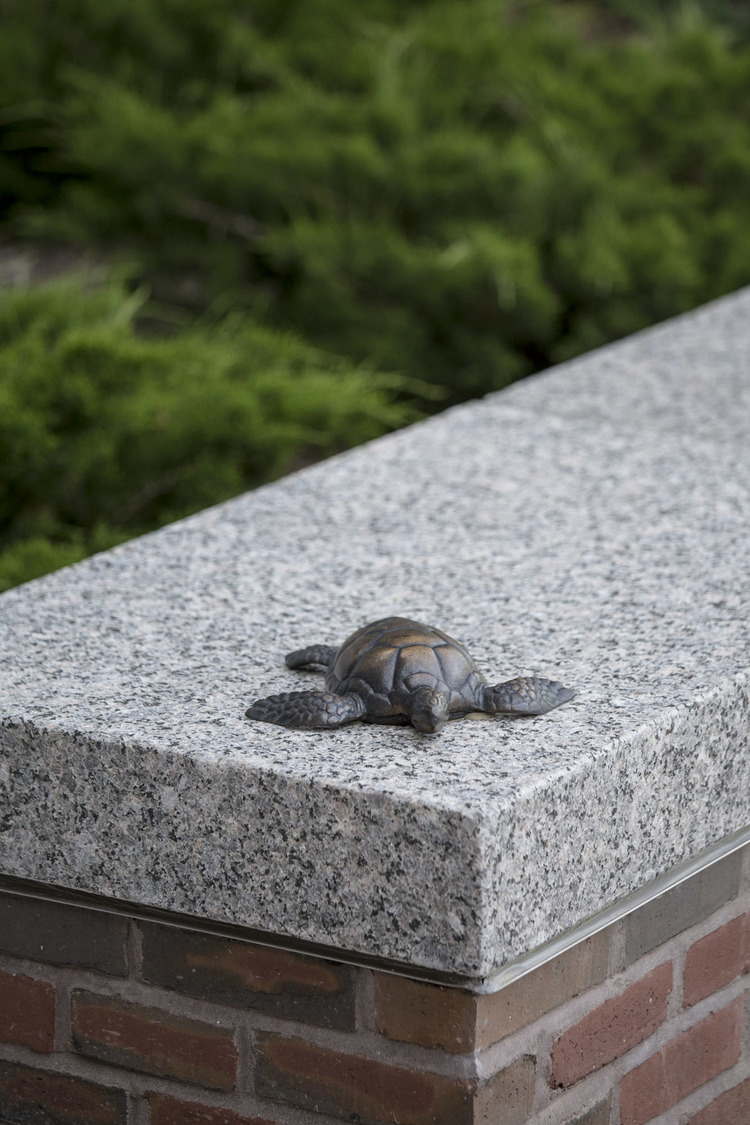
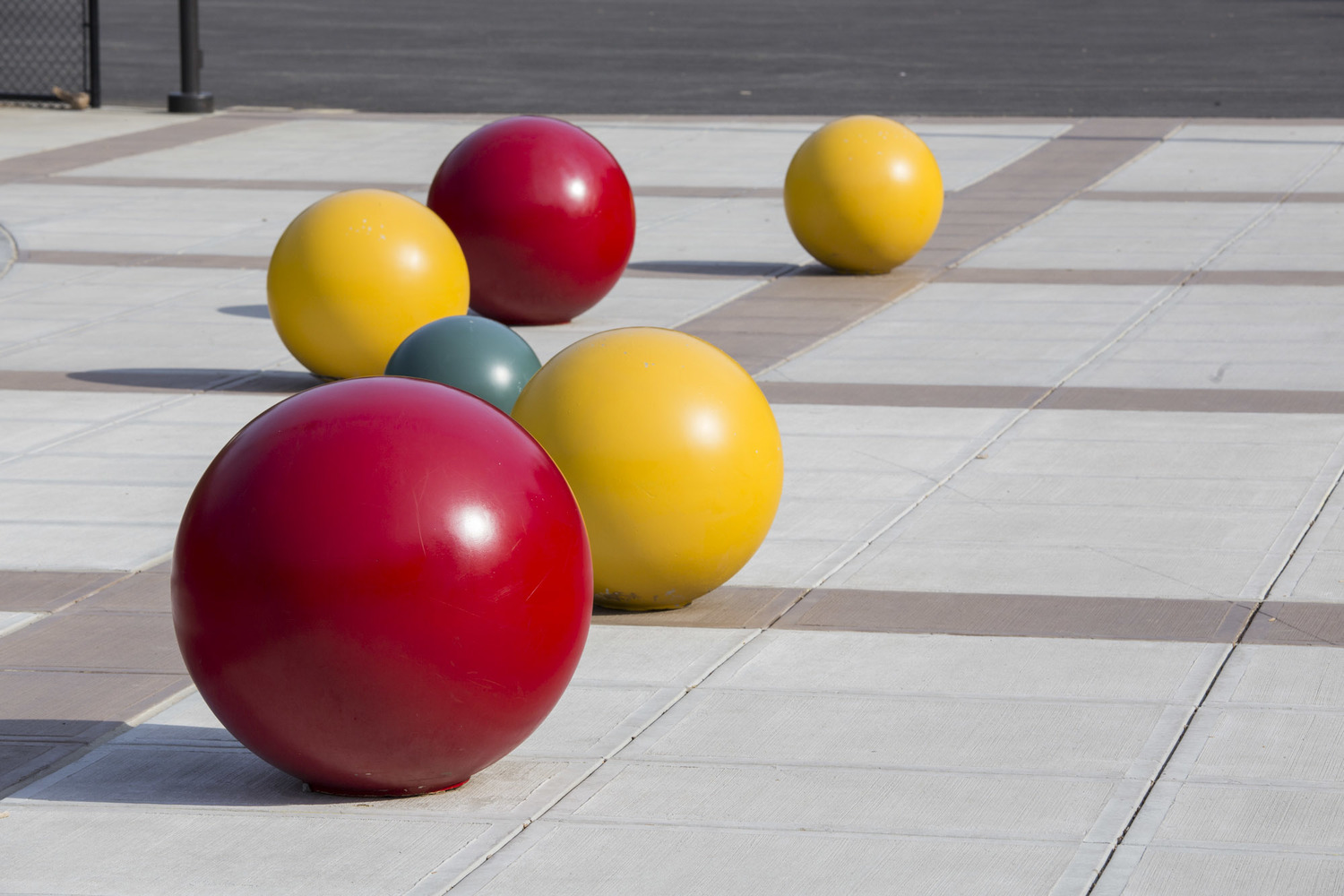
Colorful sphere bollards, mathematically installed and arranged, invite students to unlock the meaning in their precise patterns and formulas.
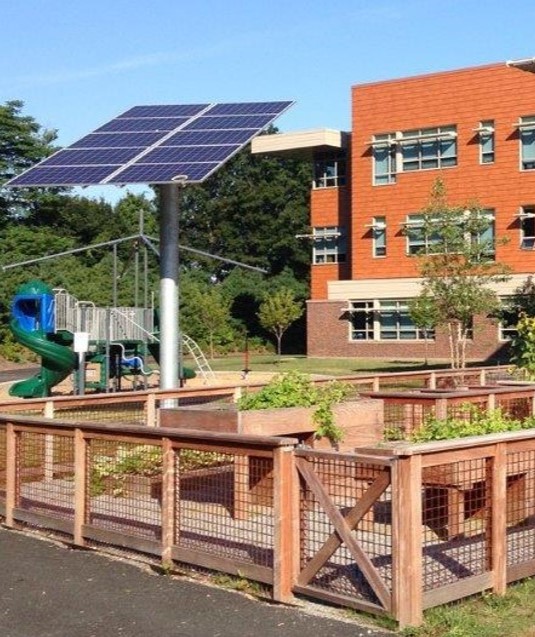
The multi-age playground area includes a solar panel, while extensive vegetable gardens allow students to grow food for their own cafeteria.
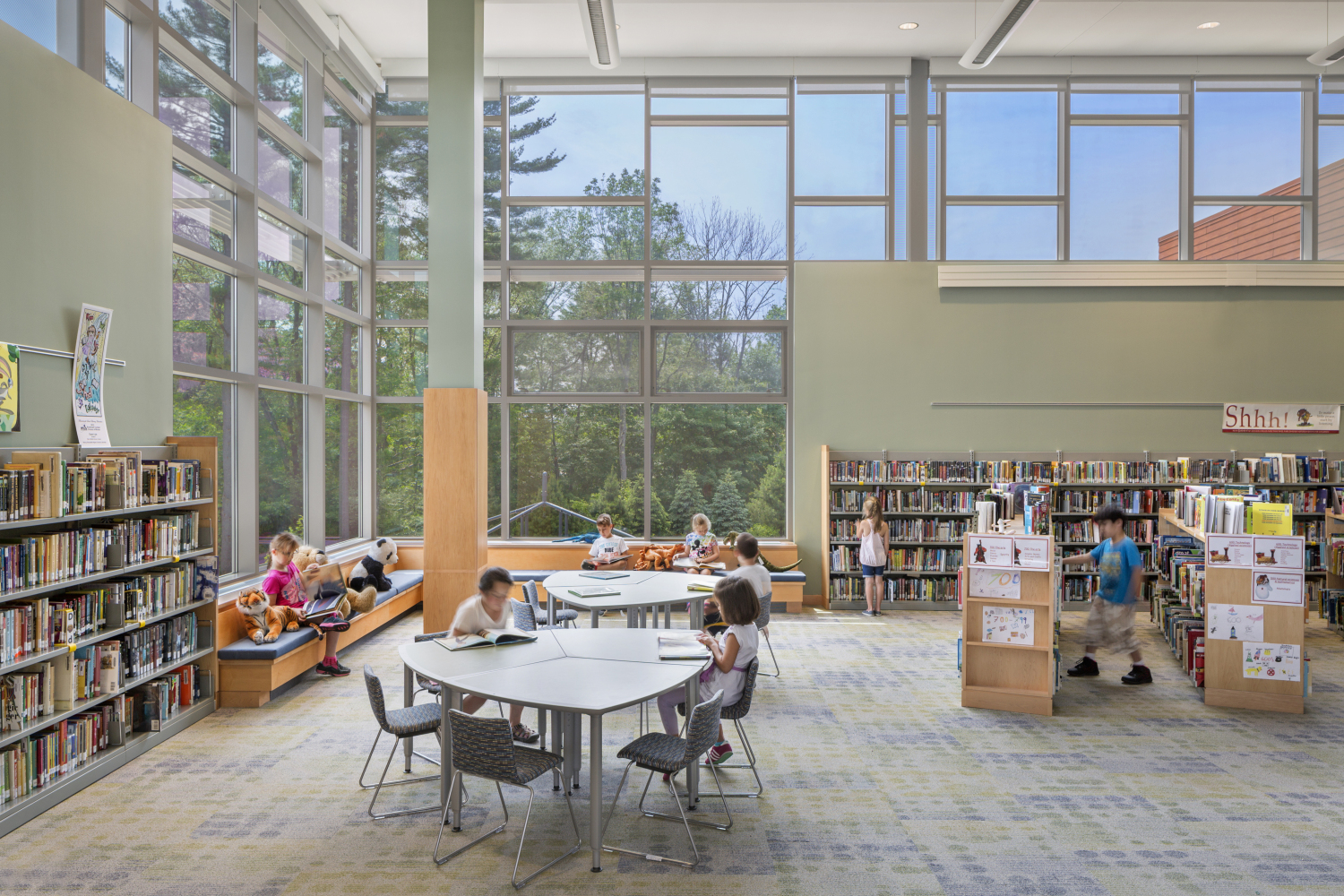
The design pays tribute to the original school’s quirky medieval look.
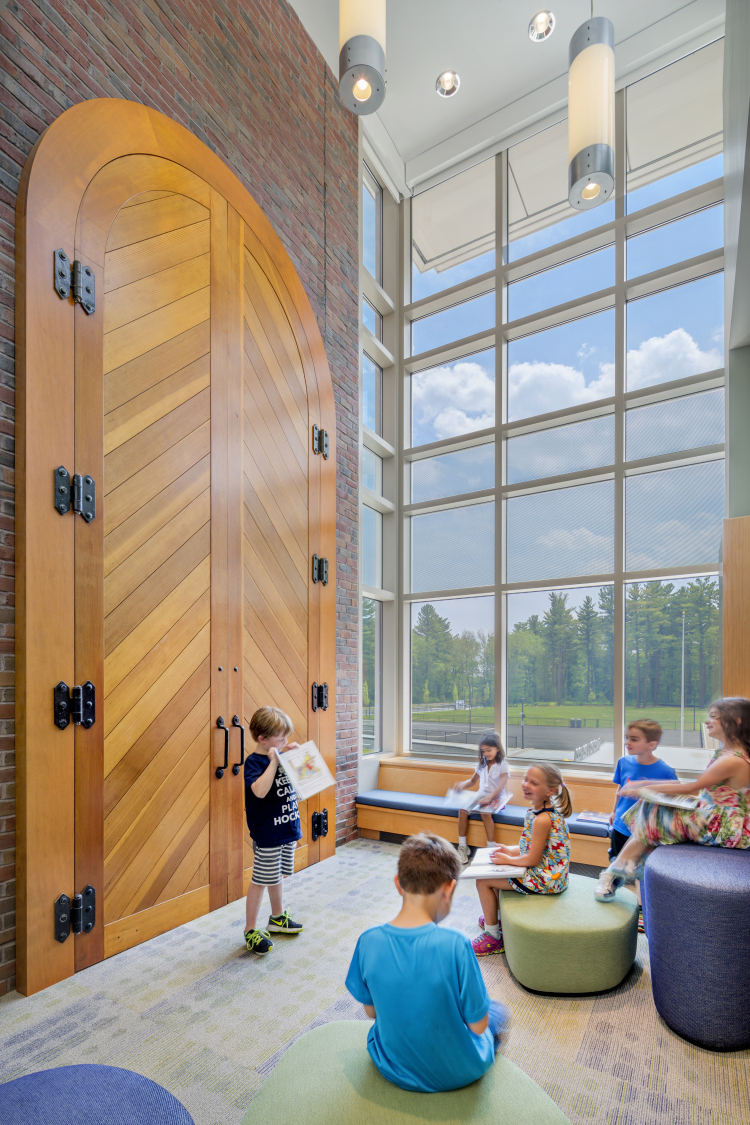
Castle-style doors from the old entryway are incorporated into the new school’s media center.
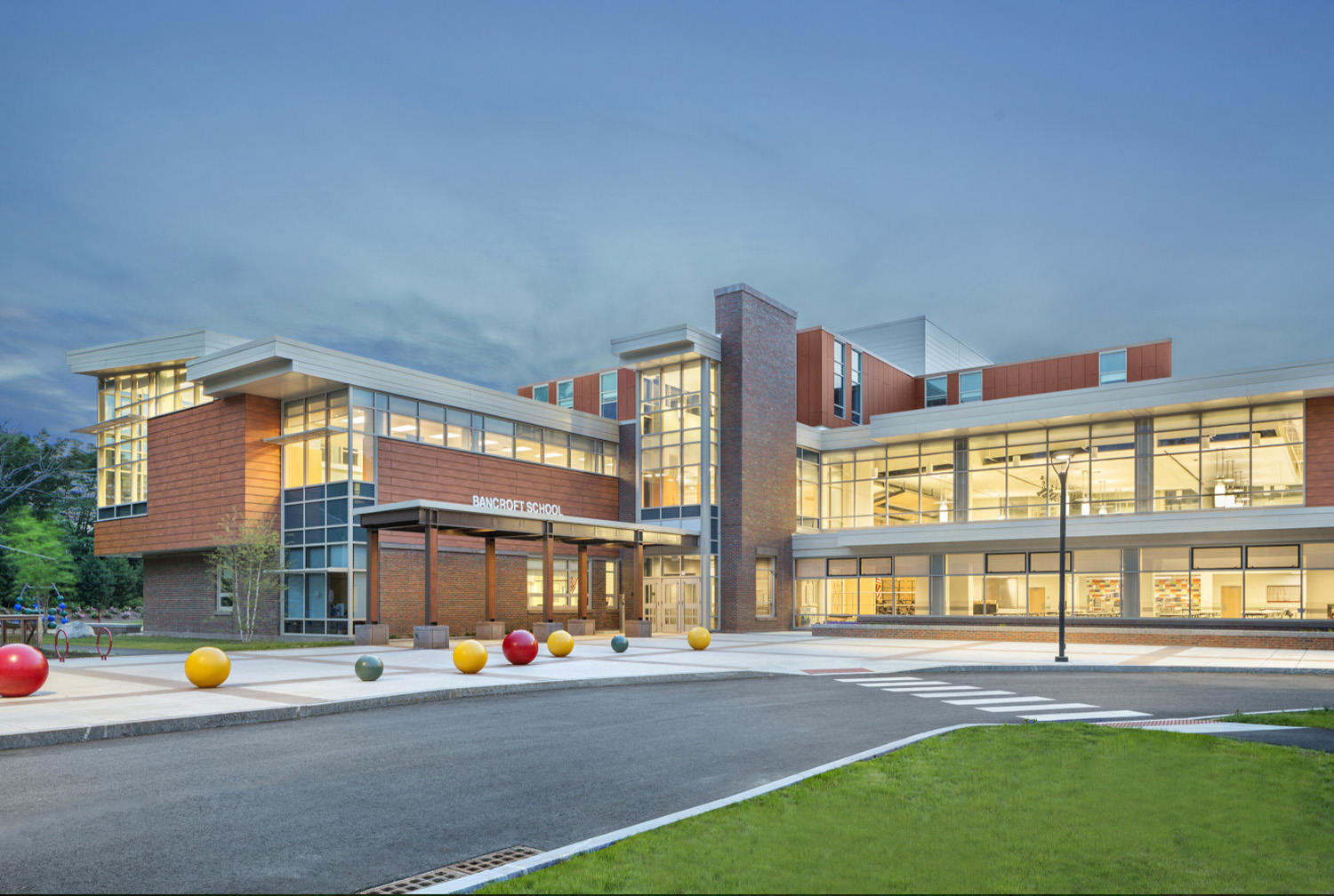
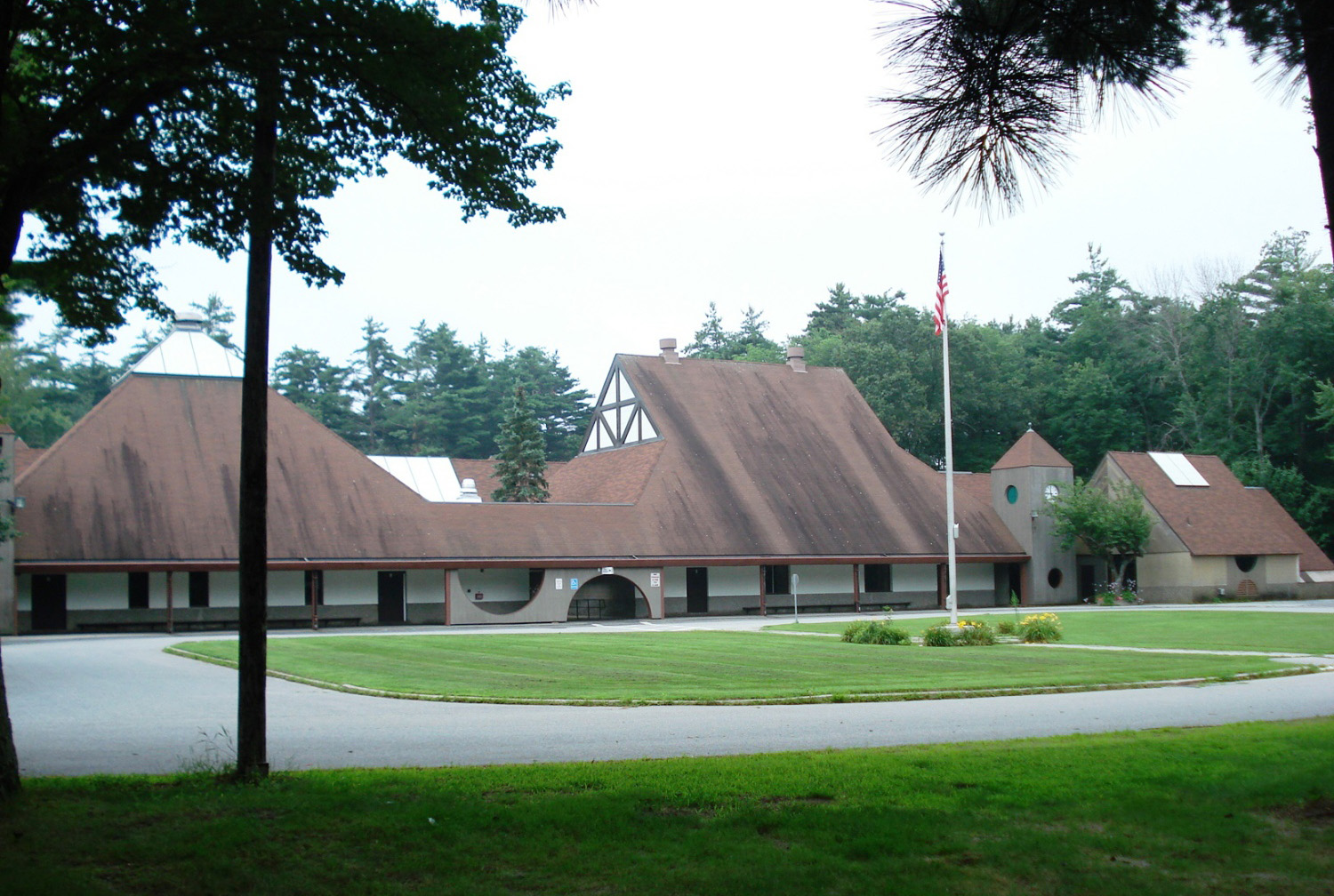
The open-plan school from the 1960s was whimsically designed to look like a castle—complete with a moat.
